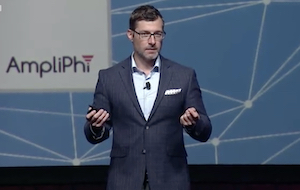Free Your Time to Do What AI Cannot
Artificial Intelligence (AI) is transforming every industry, including ours. It’s automating tasks that once took hours, even days, to complete—data analysis, portfolio construction, risk assessment, you name it. But there’s one thing AI simply cannot replace, and that’s where you, the human advisor, come in.
 Let’s wind back the clock to 2008. Remember those days and the comparatively archaic technology we had at our disposal? I was a wholesaler calling on financial advisors, and I used to leave voicemails for my clients and prospective clients during my long drives. I did this to accomplish one thing: either people were thinking about me, or they weren’t, and if they weren’t, I wouldn’t be top of mind when they had a need. It was one of the touches necessary to maintain a personal connection.
Let’s wind back the clock to 2008. Remember those days and the comparatively archaic technology we had at our disposal? I was a wholesaler calling on financial advisors, and I used to leave voicemails for my clients and prospective clients during my long drives. I did this to accomplish one thing: either people were thinking about me, or they weren’t, and if they weren’t, I wouldn’t be top of mind when they had a need. It was one of the touches necessary to maintain a personal connection.
These personal connections are something that AI cannot replace, no matter how advanced it becomes. Why? Because it’s all about where your clients choose to direct their attention.
As human beings, we crave attention. We want to feel heard, understood, and valued. And as financial advisors, we are uniquely positioned to fulfill these desires. We listen to our client’s goals and fears. We understand their financial situations and aspirations. We value their trust and strive to help them make the best decisions possible. Can AI do this?
AI can analyze data, detect patterns, and even make predictions. But can it truly understand a client’s needs and wants? Can it empathize with a client who’s anxious about retiring or celebrate with a client who’s just reached a financial milestone? Can it build trust and create a lasting relationship? The answer is a resounding no.
Let’s consider the “ROTOMA” factor or Return-on-Top-of-Mind-Awareness. As financial advisors, we are not just managing portfolios; we are managing relationships. When our clients think of financial planning, we want to be the first thing that comes to their mind. We want to be the trusted advisor they turn to in times of uncertainty and in times of joy. As sophisticated as it is, AI cannot achieve this level of personal connection and top-of-mind awareness.
What does this mean for us in the retirement planning industry? Instead of fearing AI, we should embrace it. Let AI handle the tedious tasks—the data analysis, the risk assessments, and the portfolio constructions. Free up your time to do what AI cannot do: build relationships, understand your clients on a deeper level, and maintain top of mind awareness.
Read more commentary by Spencer X Smith here.
Remember, you’re not just advising clients on their retirement plans; you’re advising them on their dreams and aspirations. You’re not just helping them manage their money; you’re helping them navigate their financial journey. AI can help with the technicalities, but it takes a human touch to provide the empathy, understanding, and attention clients seek.
What can you do to enhance and grow your base of attention? Become a content provider and not just a content consumer. In 2008, we had a laptop and a Blackberry. In-person meetings, phone calls, and emails were our main options to gather & maintain prospective clients’ attention.
In 2023, you, as a content provider, can take many more forms. It could be delivering an engaging in-person presentation that educates and inspires, using social media platforms to share timely market commentary or financial concepts, or leveraging technologies like webinars or podcasts to reach a wider audience.
AI is indeed coming for our jobs but not for our relationships. In fact, AI can help us enhance these relationships by automating routine tasks and letting us focus on what matters most: our clients. Whether we like it or not, AI is here to stay. Let it handle the numbers and let us handle the people. AI can’t replace the human connection, and it won’t replace you.
Spencer X Smith is the founder of AmpliPhi Social Media Strategies. He’s a former 401(k) wholesaler, and now teaches financial services professionals how to use social media for business development. This column first appeared in the Summer issue of NAPA Net the Magazine.

